
15 minute read
Keeping score
How Toronto-based tech firm Bespoke Metrics is standardizing data and helping to de-risk construction
BY DAVID KENNEDY
Like competitors in most industries, general contractors aren’t particularly good at sharing. Whether it’s facing off over a major contract, competing to attract the most promising talent, or striving to be the first to adopt a new technology, rivalries can be fierce.
With that in mind, it’s no surprise that when Michael Ho, the CEO of Bespoke Metrics, set out to standardize how the Canadian construction industry manages risk and carries out counterparty assessments in 2016, it was an uphill battle. “The GCs for the most part are very fierce competitors, as is the broker, as are the insurance entities, as are the subcontractors,” Ho said. “The sharing of data, despite everyone using similar systems and collecting the same data, has not been strong in this industry. It just simply isn’t.” Working to change this insular approach, Bespoke Metrics has signed up a significant list of major general contractors over the past three years, including Buttcon Ltd., Eastern Construction, EllisDon Corp., Graham Group Ltd., Pomerleau Inc. and Stuart Olson Inc., among others.
The Toronto-based tech firm has put together a suite of software solutions — known collectively as Compass — that streamline the pre-construction process by centralizing industry data. One key
PHOTO: ADOBE STOCK/LEIKA PRODUCTION
Technology for both on and off the job site is taking on an every-larger role in construction as companies work to streamline their operations.
A screenshot of the Compass dashboard showing some of the platform’s capabilities.
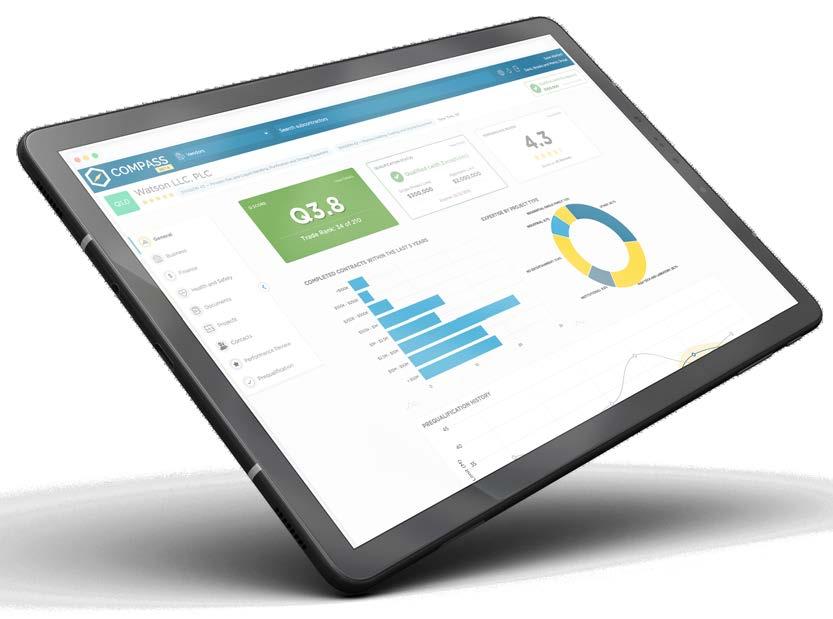
aspect of its platform, which is sold under a subscription-based model, is a prequalification tool GCs can use to vet subcontractors to ensure they’re capable of taking on various aspects of major projects. Instead of leaving each GC to their own devices when it comes to collecting data from subs, the tool stores all the information GCs need to carry out their assessments in a central hub and uses a series of models to help manage counterparty risk.
“Not sharing information is just silly,” Ho said, adding that centralizing this type of data provides subcontractors muchneeded technical support and helps protect their privacy. “Compass is simply catching construction up with what other industries have been doing for years.”
Bespoke Metrics has spent several years operating behind-the-scenes perfecting its software. Last month, it officially launched its fully integrated suite of preconstruction software, combining prequalification, performance evaluation and bidding into what it calls the Compass suite.
A ‘ROTTEN TOMATOES’ SCORE FOR RISK Carrying out financial risk assessments for subtrades is nothing new for contractors. To utilize subcontractor default insurance (SDI), for instance, GCs need to prequalify the companies they’re working with. The change is that up until now, most have been
50 / FEBRUARY 2020 using internally-built systems or processes that don’t draw on wider industry data. “It was pretty ad hoc,” Dan Radu, supply chain manager with Graham, said of the company’s previous method for evaluating subcontractors. “It was really manual… It involved us doing a lot of the grunt work and actually going out and gather financials from the vendors. And not only do you have to gather them, you have to go through them, analyze them and score them. Then you would look at the scores and make your recommendations.”
Graham has been using Bespoke Metrics’ software tools to assess the subtrades since February.
“They’re going out and extracting all the information from the vendors,” Radu said. “They’re ensuring them that they’re submitted the right way. They apply their Q Scores on it, and it’s great because our risk people can just do proactive risk-type stuff. They can just look at what’s provided and make a decision as opposed to doing all the grunt work to get to that point.”
To calculate the ‘Q Score’ — a measure of a subcontractor’s ability to meet its obligations on time and on budget — Bespoke Metrics uses a range of data points, including qualitative variables, financial information and health and safety records, among other inputs. It collects the information directly from subcontractors through a standard checklist it calls a Compass 1 Form. “The sub enters in their data and we verify their data,” Ho says. “It’s not an audit function, but we do look for accuracy. It’s very important because the next stage is dependent on the accuracy, completeness and the validity of that data.”
With the data in-hand, the company uses a number of custom-built models to create a relative risk curve for each sub that weighs their ability to perform a certain job on time and on budget. “It’s kind of like lining up the kids in class by height,” Ho adds. “There’s a tallest kid in class and there’s a shortest kid.” Though Graham is still in the process of phasing in the new tool, Radu expects it will allow the company’s risk team to look at a far greater number of projects. “What it’s going to enable us to do is to do more financial assessments on vendors, whereas in the old way we just wouldn’t have had the capacity to do it,” he said.
In turn, Radu anticipates lower exposure to risk. “You can get hurt just as bad on the financial risk side as you can on the health and safety side, as far as projects being shut down because one of your trades went bankrupt or something like that.”
Along with simplifying the pre-qual process for generals, Bespoke says the 1 Form makes life easier for the subs, which can submit their data to one central hub as opposed to answering requests from all the GCs they’re currently working with. Subcontractors are also in control of their data, meaning their information is only shared if they give the go-ahead. Moving forward, Ho said Compass will be focussed on increasing functionality and benefits for the entire subcontractor community.
NOT ‘SECRET SAUCE’ Getting the industry to climb aboard has not been without its challenges.
Right out of the gates, one of Ho’s major obstacles was overcoming the tendency of general contractors to shy away from technology their competitors are using. Proving Bespoke Metrics was dedicated to its thirdparty status was difficult, but slowly, the firm started to gain momentum.
EllisDon was the first major GC to sign
on and test out the technology.
According to Rosemarie Lipman, the chief innovation officer and senior vice-president of Digital and Data Engineering at EllisDon, the contractor had been taking a close look at their risk management strategy, including the information they collected from their subcontractors, when they were first approached by Ho. EllisDon decided using a standardized tool would benefit both the company and the overall construction industry.
“It was really this idea that there is no secret sauce,” Lipman said. “We are all collecting the same information. It is all driven by the [insurance] carriers and why don’t we make it easier for subcontractors to provide us with that information? And so, from EllisDon’s perspective, we wanted to facilitate that collection of information but also make it an industry tool and standardize it.” Along with embracing Bespoke Metrics’ Compass tool, EllisDon invested in the company in 2017. The terms of the deal meant EllisDon gained no operational control over Bespoke Metrics, leaving the company to serve the industry from an unbiased position.
“We didn’t want it to be an EllisDon product… When we invested it was really to provide some seed money and get them up and running,” Lipman said. “We also contributed ten years of our prequalification data so they could optimize their model and then helped them with the concept. Since then, it’s really taken off and you have multiple national GCs providing feedback and input, and really, I think that’s why it’s such a robust product.”
BRANCHING OUT Having taken a significant bite out of the Canadian construction industry — the


Join us at North America’s largest construction trade show to find out how. Booth #C20627
company has about two dozen major GCs on board, as well as some 4,500 Canadian subcontractors in its system — Bespoke Metrics is beginning to think a bit bigger. It signed up its first U.S. client in September 2018 and has continued expanding its reach south of the border since. Currently, it’s operating throughout the West Coast and has established footholds in Illinois, Massachusetts, Michigan, Ohio, Tennessee and Texas.
Compared to its growth in Canada, Ho said the company is expanding about twice as quickly in the U.S., largely thanks to having refined the product at home first. “The speed and the turnover and adoption has simply just been faster because it’s a product that’s go-to-market,” he said.
Eventually the tech firm plans to go fully international and establish operations across North America, Western Europe and Australia.

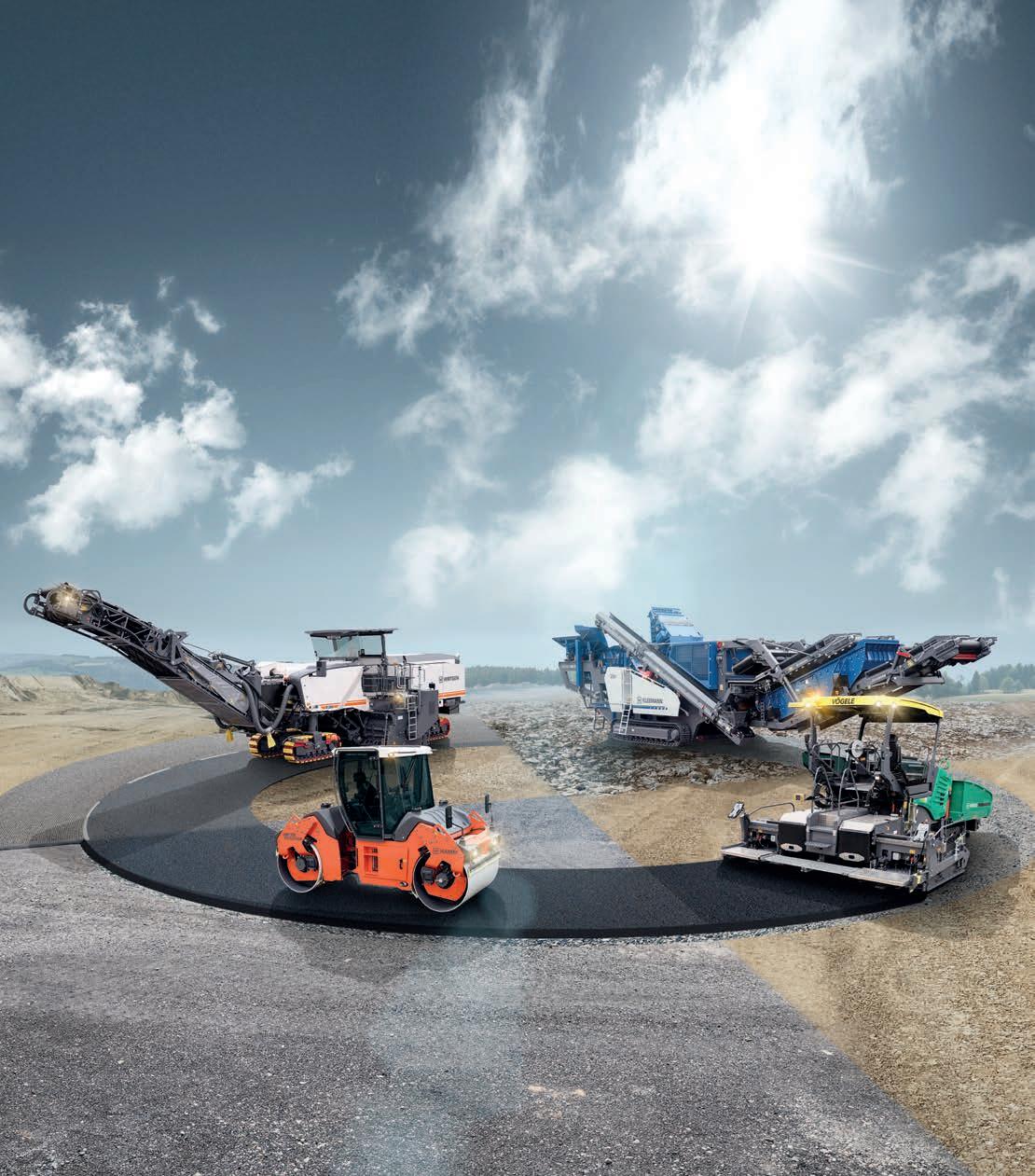
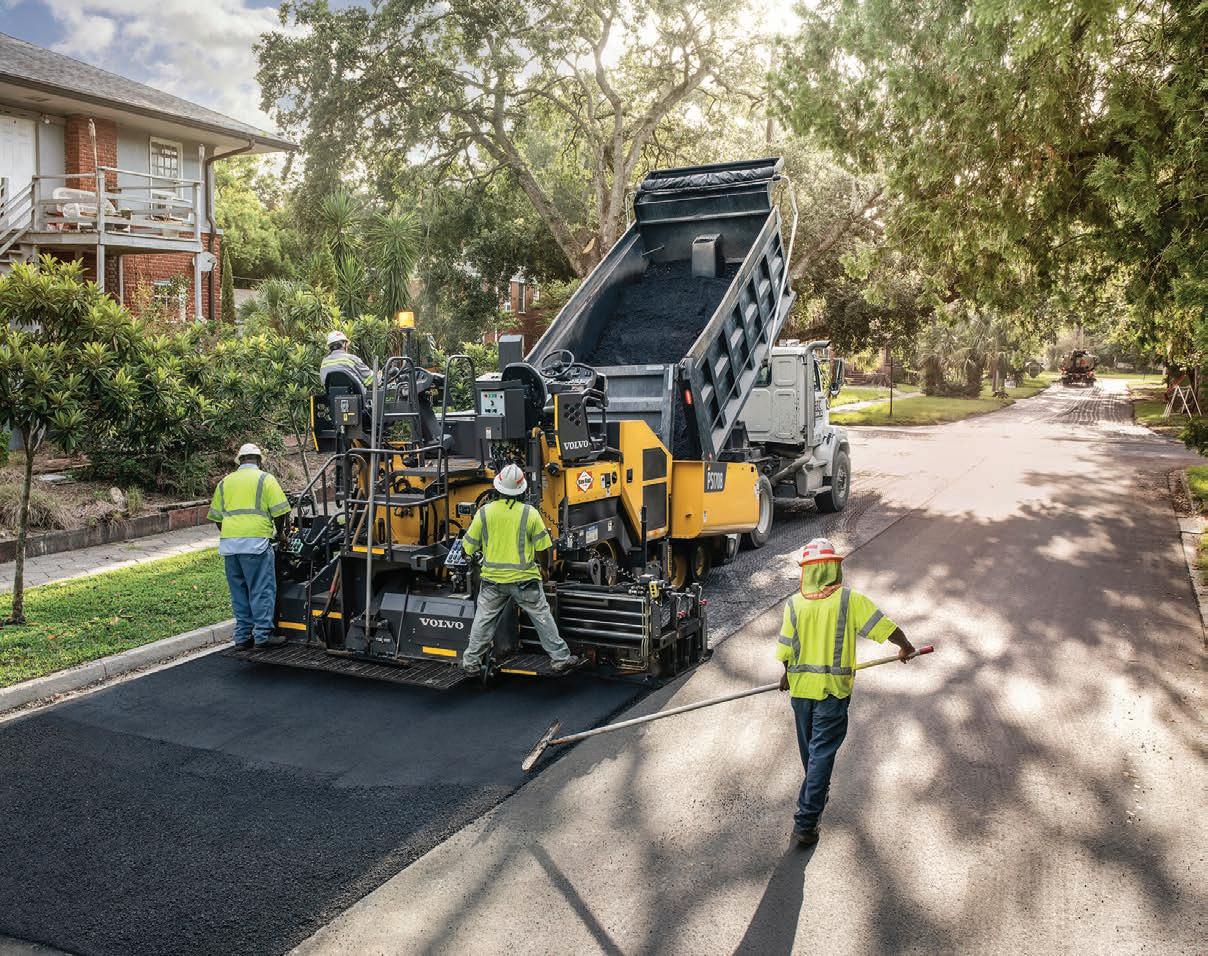
IGNORING THE ELEMENTS Innovative features extend paving season in colder markets, increase operator comfort and safety
In Canada, the old saying goes, there are two seasons: winter and construction. While the cooler temperatures and frozen ground bring some projects to a halt, innovative new technology and upgrades to large-scale asphalt pavers are extending paving season in the Great White North.
“Canada tends to have a considerably shorter paving season,” Henry Polk, product manager of pavers for Bomag says. “The mix cools much faster during transport when it’s cold outside, which results in cooler mix going through the paver and showing up as a cold spot on the mat.”
To combat this, the company has released specialized paver models 652 and 662 with Remix technology. The technology BY MEGAN HOEGLER
on-sitemag.com / 53 reblends the mix using counter rotating augers, remixing 100 per cent of the asphalt and keeping it from cooling down too much. It doesn’t heat the mix, but it does result in a consistent temperature across the width of the mat, which reduces the appearance of cold spots.
In case any cold spots make it through, Bomag has integrated thermal imaging to detect the cold spot before it causes any serious problems.
“More and more places are instituting a thermal image spec on highway jobs,” Polk says. “An infrared camera records the thermal image of the job, then inspectors review the images and look for any large temperature differentiations in the mat.
20_0118_On Site_FEB_CN Mod: December 11, 2019 4:35 PM Print: 01/28/20 10:43:42 AM page 1 v7
π
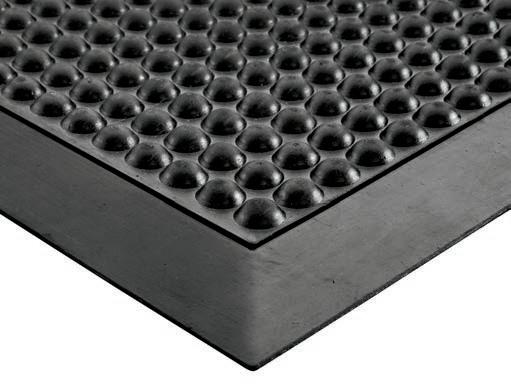
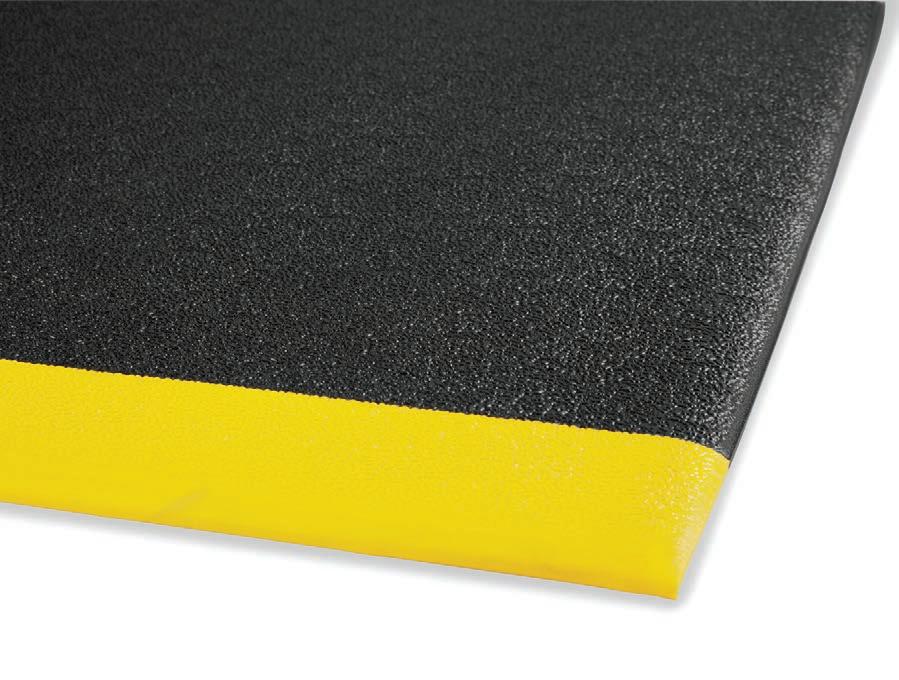
FIGHT FATIGUE HUGE SELECTION OF ANTI-FATIGUE MATS

ORDER BY 6 PM FOR SAME DAY SHIPPING

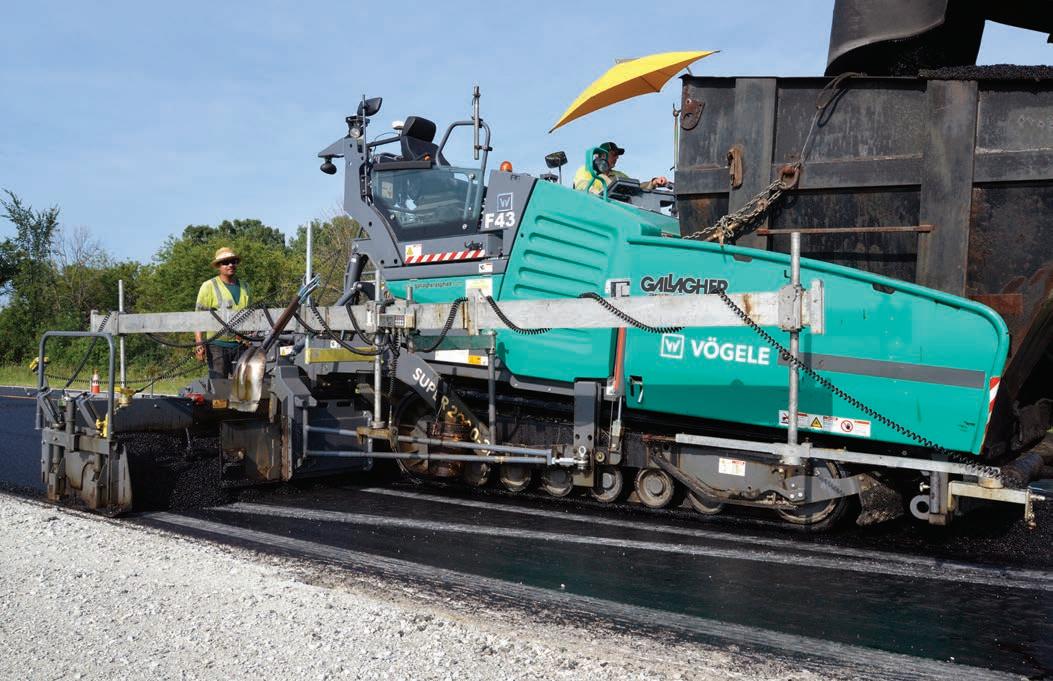
It’s been proven that cold spots are the origin of most asphalt failures, so identifying and repairing them early reduces repair costs later.”
Cold weather isn’t the only issue paver manufacturers are looking to tackle with a new generation of equipment.
Germany-based Vögele, a part of the Wirtgen Group, has focused on operator comfort in their latest models, among other features. Their models include heated seats and operator adjustments for optimal comfort inside the cab. The company is working on improving performance as well.
“We have seen increased interest in compaction screeds as opposed to classic vibratory screeds among Canadian contractors,” Jim Holland, vice-president for sales at Vögele says. These new tamper/vibratory screeds (TV) incorporate a tamper bar in addition to vibration for effective pre-compaction. The result is a higher mat density than a standard vibratory screed. Over at Volvo Construction Equipment, customers are often unsure whether to go with a tracked or wheeled paver. Bill Laing, product manager of road products for Volvo Construction, says it depends on the application.
“Tracked pavers are good options in all paving applications, but they tend to be preferred over wheels on softer bases because of their traction and flotation,” Laing explains. “Wheeled pavers are preferred for mill and fill applications and where traction isn’t as much of a concern. They are also favoured in applications where the operator needs or wants to move the machine without putting it on a trailer. The wheeled paver is easier to move and travels faster, so it’s more flexible for transporting shorter distances.”
IF YOU’RE NOT MOVING, YOU’RE NOT EARNING.

0% for 36 MONTHS on NEW models Contact your local dealer www.hceamericas.com

COMPLETE FLEET DIAGNOSTICS

Check us out at Booth N11601 and Booth F6914 March 10 th -14 th , 2020
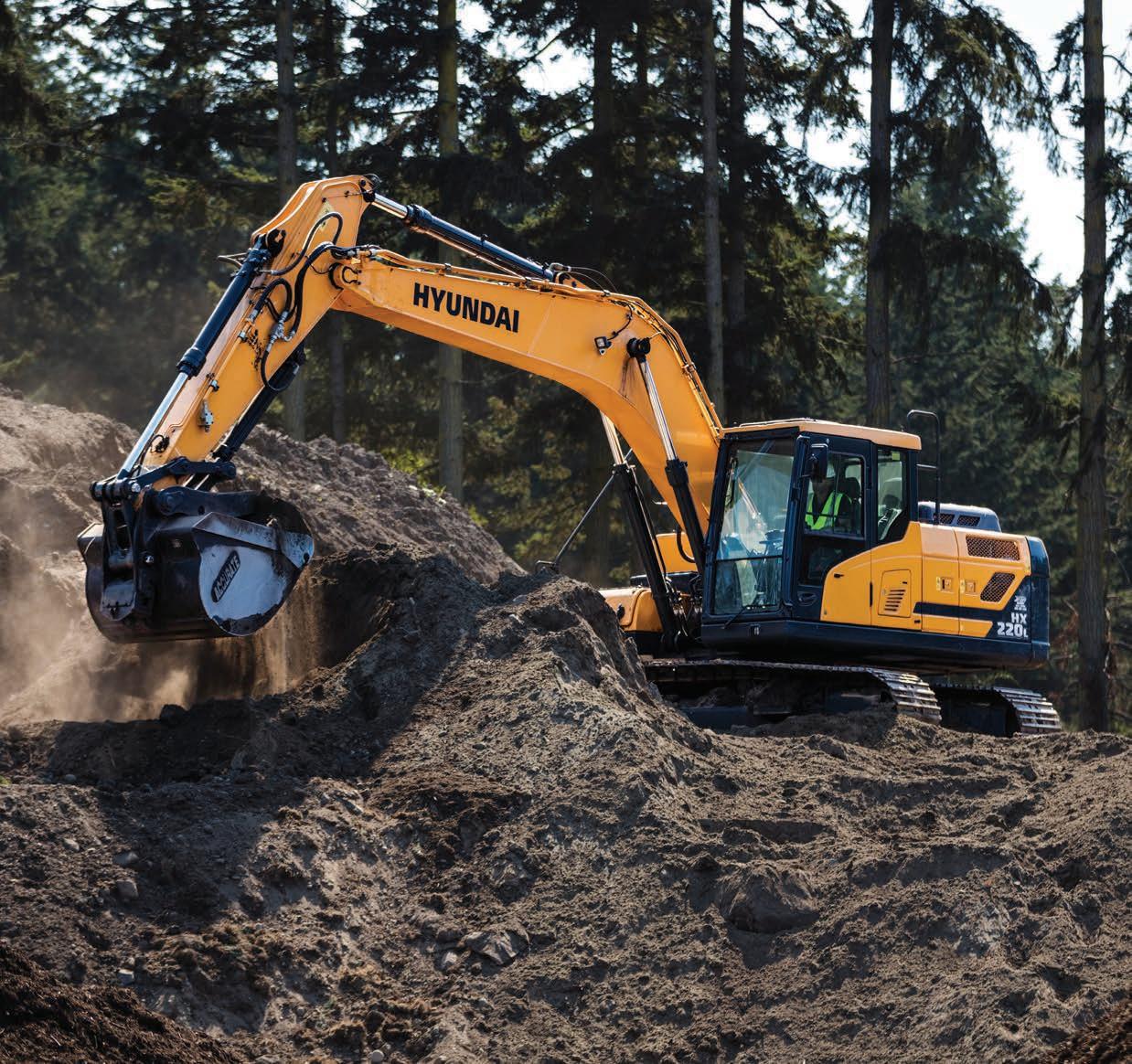



Hi MATE onboard diagnostics lets you monitor your equipment from anywhere and alerts you to potential issues before they become a problem, keeping you up and running and earning more.
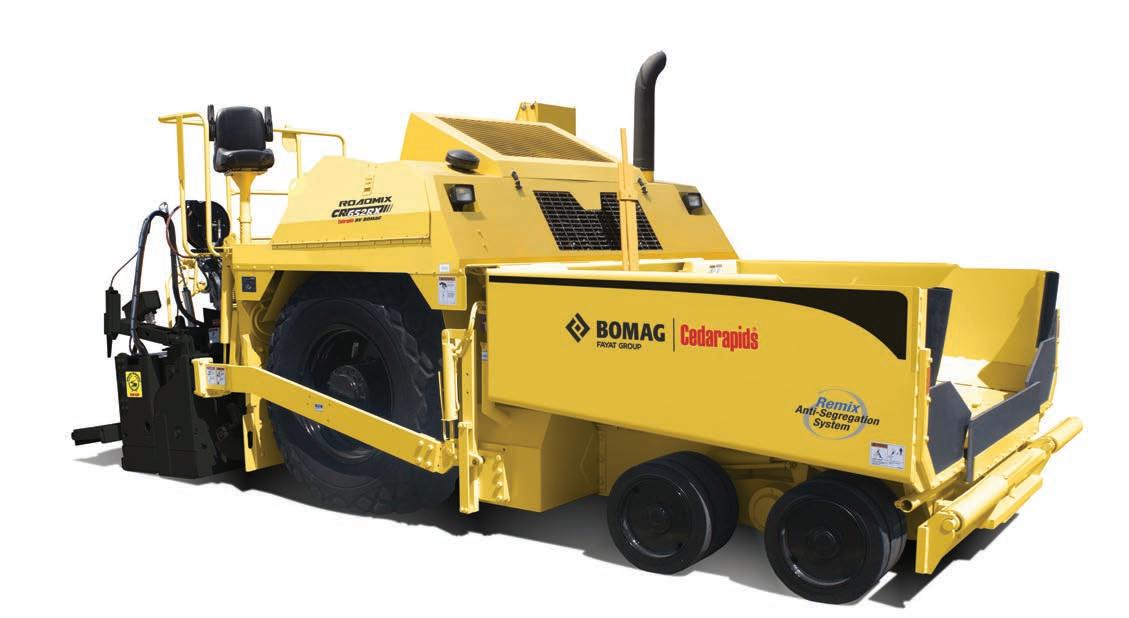
PHOTO: BOMAG
According to Holland, the most innovative changes among asphalt pavers have been in their control and drive systems. Hydraulic control systems and CAN (Control Area Network) designs have made it possible for microcontrollers and devices to communicate with each other independent of a host computer. “These types of controls allow contractors to maintain

LIMITED TIME OFFER PRE-Register Online by March 20, 2020 AND SAVE 50%! CONVENIENT ONLINE REGISTRATION AVAILABLE AT: WWW.AHES.CA

56 / FEBRUARY 2020 consistency of the forces that holds the free-floating screed to-grade,” Holland says. Through precise management of the paver speed, material delivery, screed extend and retract and stopping and starting, we have been able to significantly improve the quality of pavement jobs.”
Vögele’s latest pavers, the three-metre tracked and wheeled Super 2000-3i and Super 2003-3i pavers, as well as the 2.4-metre tracked and wheeled Super 1700-3i and the Super 1703-3i, were introduced four years ago. Its Dash-3 paver models feature new and improved technology upgrades.
“We have developed a completely different mainframe,” Holland explains. “First, the profile of the machine is identical to the larger Super series pavers, which provide improved all-around visibility. The Tier 4 final engine utilizes a ureabased treatment system and the controls have also been updated to be more user-friendly.”
The updated controls allow contractors to maintain consistency, a precise speed, material delivery, screed extend and retract, all while, improving pavement quality.
This January, Volvo debuted two new pavers: the P5110B tracked paver and the P5170B wheeled paver. The mid-sized pavers were designed for both heavy and light highway tasks and built to be easy to maintain. Volvo’s engine speed technology was integrated into the design, resulting in a low rpm of 1200. These two new paver models will make their debut at CONEXPO in Las Vegas in March 2020.
Volvo has also been focusing on improving mat quality through automated paver functions and integrated technologies that help the paver to function more efficiently.
“Speed limiters, grade and slope control, auto vibration and material-flow sensors on the screed are all examples of technologies we use that help automate tasks that could cause mat quality problems,” Laing says. “And they make the paver more efficient for the operator.
Efficiency is a major focus for all manufacturers, who are
building with the customers’ needs and wants in mind. When a customer invests in a paver, Polk says it’s important they get the most for their money. This means building a multipurpose machine. “You need to build pavers that cover a wide range of applications,” Polk explains. “The customer wants to use the paver in multiple settings rather than owning several pavers each with limited applications.”
Keeping with the times, upgraded paver designs incorporate environmental and health benefits for workers. The U.S.-based National Institute for Occupational Safety and Health (NIOSH) classified asphalt fumes as hazardous chemicals in 1998 and recommended to limit exposure to just 15 minutes. These changes drove paver design changes during the 2000s.
“They don’t have anything to do with actually making pavement, but they do provide an opportunity to include improvements that benefit the performance of the paver and the working environment, which improves pavement quality,” Holland says. Even with bells and whistles, the priority among customers is, and likely will remain, safety. Vögele points to its pavers’ enhanced operator safety features as major selling points for its products. The Vögele Dash 3 operator seat, for instance, positions the operator away from the augers, avoiding an annoy
PHOTO: BOMAG

ance when at the controls, while the machine’s tapered frame keeps the augers within sight. The cab also features a canopy to protect the operator from direct sunlight.
Whether it’s hovering uncomfortably close to freezing, or a hot, sticky summer day, the next generation of pavers are being designed to operate in any and all conditions. From keeping the operator as comfortable as possible while inside the cab to ensuring a smooth, cold spot-free mat, paving roads gets a little easier each year.

SR 41

All-Steel casing Extra-long tread life Excellent traction Superior stability Steel belts










